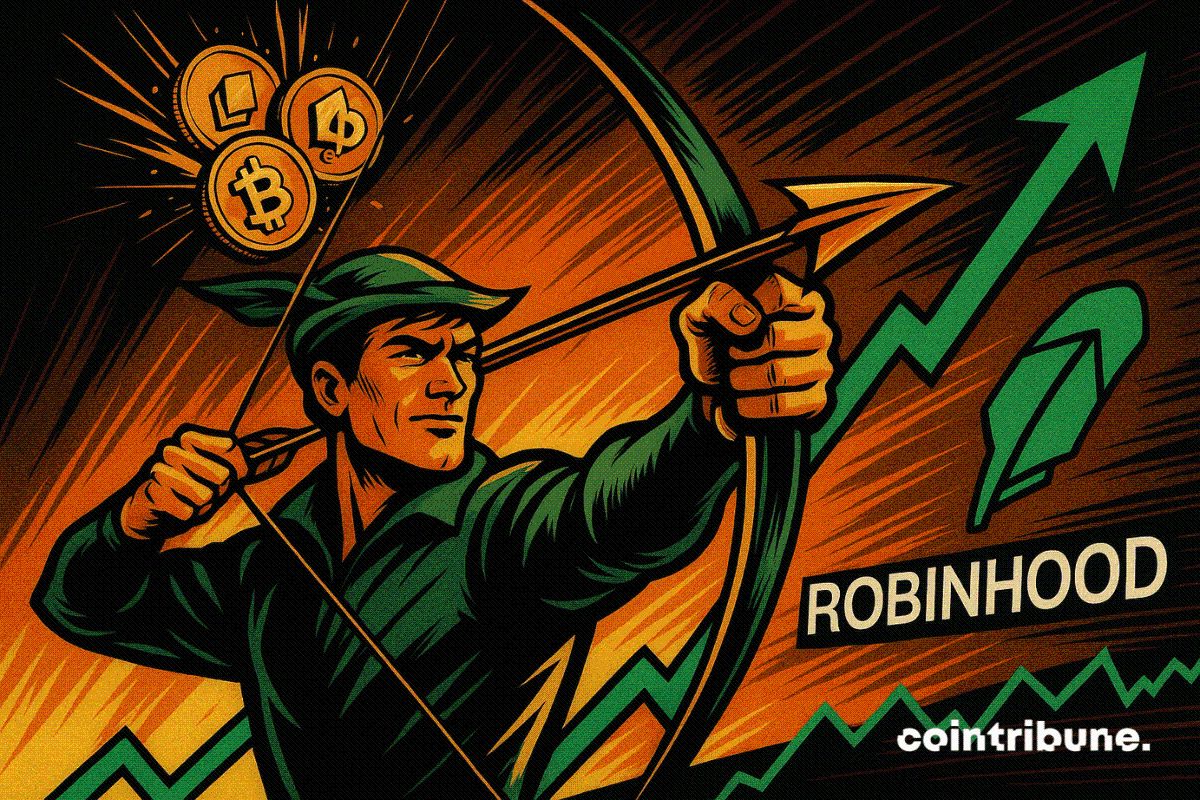Bitcoin News Today: Traditional Finance Liquidity Changes Fail to Impact Bitcoin Despite Trade Agreement
- U.S.-China trade deal announced Nov 1, 2025, failed to move Bitcoin’s price amid stable $110,000 range. - Analysts attribute Bitcoin’s flat performance to TradFi dominance in liquidity, shifting from retail speculation to institutional stability. - Trade deal’s supply chain reforms and stablecoin growth (e.g., Western Union’s USDPT) may indirectly boost Bitcoin liquidity long-term. - Provisional agreement terms (expiring by late 2026) and geopolitical risks limit immediate crypto market reactions despite
The historic trade pact announced between the United States and China on November 1, 2025,

The details of the U.S.-China trade pact, outlined in a
Market observers attribute Bitcoin's steady performance to evolving market conditions. "We're witnessing a transition from early adopters who thrived in volatile times to a new wave of traditional finance participants who favor stability," one analyst noted in a recent publication. This shift indicates that long-term holders are selling to institutions seeking less risky, more stable assets. The pattern mirrors broader financial trends, as established financial firms increase their Bitcoin exposure while retail speculation declines.
The broader economic effects of the trade deal could indirectly impact Bitcoin, particularly through the integration of stablecoins and traditional finance.
At the same time, the trade pact's emphasis on agricultural and industrial supply chains may influence crypto demand in sectors such as logistics and energy. For example, U.S. soybean growers could see gains from China's pledge to buy 25 million metric tons annually, potentially boosting business revenues and reducing uncertainty. Still, these macroeconomic shifts tend to affect Bitcoin's price indirectly or with a delay, as it remains more responsive to monetary policy and institutional investment patterns.
Importantly, the temporary nature of the agreement—with many provisions set to lapse by late 2026—adds to market unpredictability. While the deal offers short-term relief from trade disputes, its long-term effectiveness is uncertain, discouraging bold moves in both stock and crypto markets. This caution is further heightened by global geopolitical issues, such as
Looking ahead, Bitcoin's direction will likely be shaped by stablecoin activity and institutional participation. The Stablecoin Supply Ratio (SSR), which compares Bitcoin's market value to stablecoin reserves, has reached levels historically associated with bearish sentiment, hinting at a possible price floor. However, confirmation will depend on continued capital inflows and further development of traditional finance infrastructure, such as
Disclaimer: The content of this article solely reflects the author's opinion and does not represent the platform in any capacity. This article is not intended to serve as a reference for making investment decisions.
You may also like
Bitcoin Latest Updates: Crypto Market Sees Intense Battle Between Bulls and Bears as Fear Index Drops to Lowest Point in Six Months
- Crypto fear index hit 21 (six-month low) on Nov 4, 2025, driven by volatility, volume spikes, and social sentiment, per CoinMarketCap. - Bitcoin fell below $100,000 amid $2B liquidations and $137M ETF outflows, while 45,700 BTC ($5B) were panic-sold to exchanges. - Regulatory pressures (Australia sanctions, UK stablecoin rules) and bearish leveraged trades ($140M short positions) deepened selloff. - Market remains divided: CZ and AI models signal accumulation, but Galaxy cuts Bitcoin target to $120K amid

Supreme Court Questions Trump’s Emergency Trade Authority

Global Liquidity Divides AI Leaders: Genie Faces Challenges While Palantir Rises
- Global liquidity boosts AI projects, with Genie Energy and Palantir as key beneficiaries despite market volatility. - Genie Energy’s Q3 2025 revenue rose 24% to $138. 3M , driven by higher energy sales, but gross profit fell 21% due to rising commodity costs. - Palantir reported $1.18B Q3 revenue, exceeding estimates, with 121% U.S. commercial growth and $10B U.S. Army AI contract. - Analysts highlight divergent AI trajectories: Genie faces margin pressures from energy costs, while Palantir’s government

OpenAI's $1.4 Trillion AI Risk: Will Altman's Refusal of a Bailout Succeed?
- OpenAI CEO Sam Altman rejected "too big to fail" claims, asserting the AI firm rejects government bailouts and state intervention in business decisions. - A $38B AWS partnership provides OpenAI with 100K+ Nvidia GPUs and millions of CPUs, diversifying cloud reliance after a $500B PBC restructuring with Microsoft . - Altman projects $20B annual revenue by year-end and $100B+ by 2030, despite $1.4T infrastructure spending plans raising sustainability concerns among analysts. - Political scrutiny grows as F
